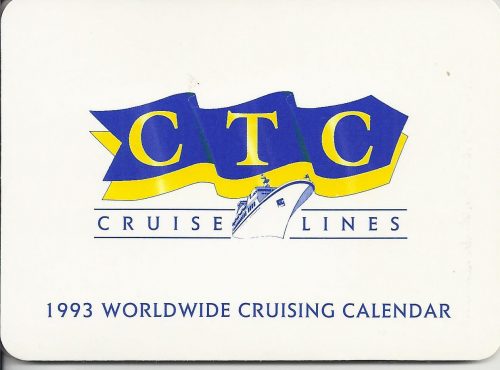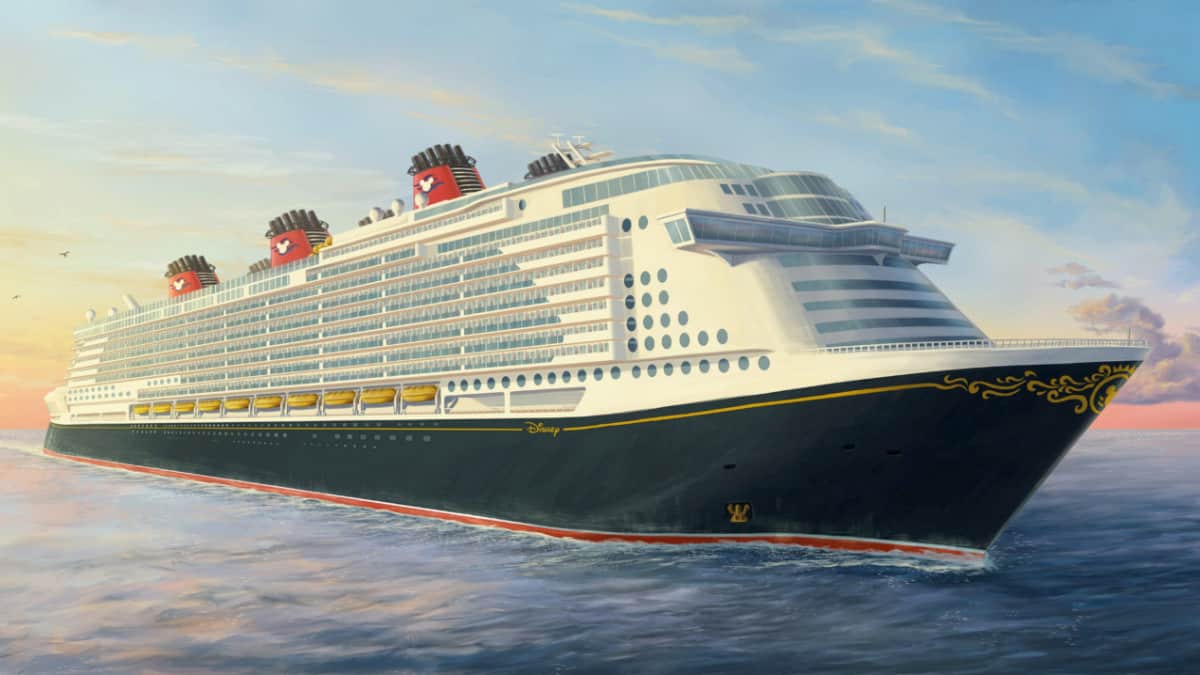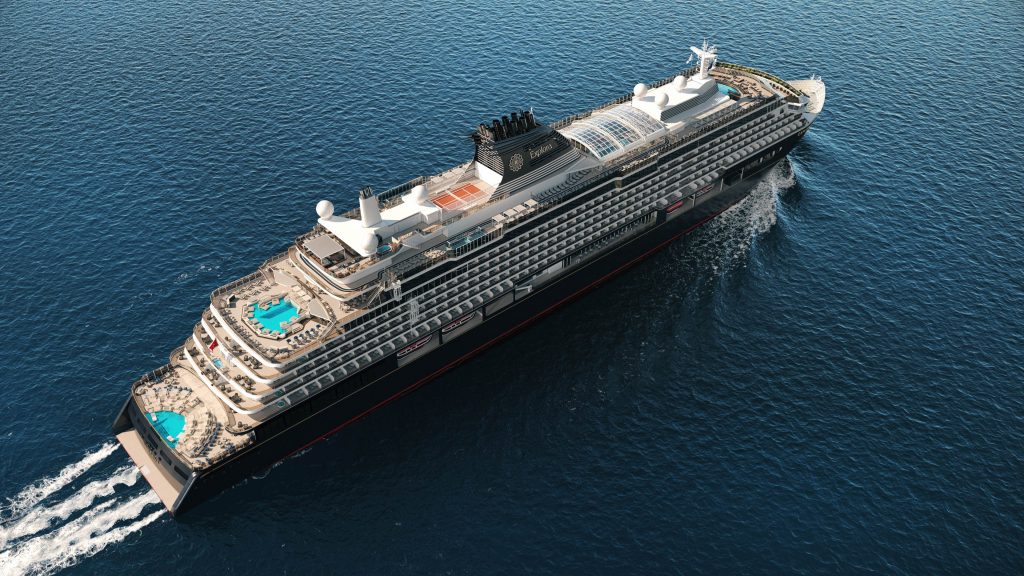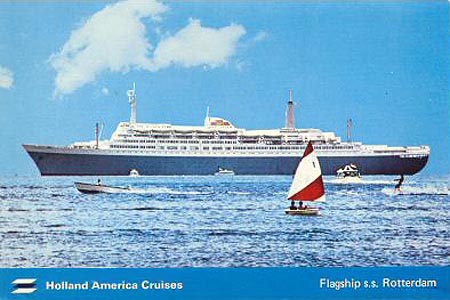The Charter Travel Club was formed in 1966 by three businessmen who saw the potential in the growing demand for sea travel from the UK to Australia and New Zealand as a result of the emigration boom of the decades before. Many wanted to visit their far away family members and the way to do this at the time was by sea.
The Charter Travel Club, or CTC had their offices in Ealing, West London. A 5 pound annual membership fee was charged. At the start, group bookings were placed at other companies operating existing services between the UK, Australia and New Zealand. However, by 1968 demand had increased to the level it was economically viable to charter a complete vessel. The Soviet vessel Shota Rustaveli, fresh from the yard exactly satisfied CTC’s needs. This charter was later followed by others, her sister ships Alexandr Pushkin, Tarac Shevchenko and Mikhail Lermontov (vessels named after famous Soviet poets and referred to as Poet-class vessels)

These sailings in both directions between the UK and down under started as a yearly voyage but it soon reached a peak of six voyages in each direction which were the Club’s main business.


To fill the gap between liner services, already in1969/70, cruises were being operated from Sydney. In the early Seventies, due to the decline of immigration to Australia and New Zealand but also because liner services were replaced by air travel worldwide, cruising became the company’s mainstay.
Between 1973 and 1975, the worldwide fuel crisis and increase in fuel costs caused many companies to discontinue liner services altogether, their ships were taken out of service and were laid up, scrapped, or switched to cruise service.
In 1973 the Soviet Ministry of Merchant Marine acquired two Cunarders, Carmania and Franconia, which were renamed Leonid Sobinov and Fedor Shalyapin respectively. A charter agreement with CTC followed and Leonid Sobinov immediately started cruising out of the UK for the Charter Travel Company. The Club element had disappeared now and together with it the annual membership fee.

CTC Lines were purchased in 1975 by the Anglo-Soviet Shipping Company and became a wholly owned subsidiary. New offices were opened in Regent Street, London in July that year. Starting January 1, 1976, CTC was appointed General Sales Agent in the UK for all Soviet passengers shipping companies.

Business flourished until 1982 and the company expanded with offices in Belgium, Denmark, Switzerland and Singapore with sales agents in other European countries and even in the US. In 1979 CTC Lines operated its first fly-cruise program.
During the 1980’s, CTC cruises steadily expanded and two vessels of the Belorussiya-class were added to the fleet of chartered ships to serve alongside their Poet-class ships, the Kareliya and Azerbaydzhan. These vessels were originally planned as ferries with cruise standard interiors, but they all were converted to fulltime cruise ships later in their careers. Cruises were offered to the Mediterranean, the Canary Islands,, Scandinavia and the Baltic but also to North Africa, the Caribbean, South America and even an annual world cruise was added.

In 1988, a third ship of the of the same class of vessels, the Belorussiya was added to the CTC fleet which was operated on a series of cruises in the Far East and the South Pacific together with Alexander Pushkin. Both ships were homeported in Sydney, Australia.
The 1990’s saw the demise of the Soviet Union which also forced the major Russian shipping lines to reorganize their fleets at short notice. But finally, the Far Eastern Shipping company put their Alexandr Pushkin on the market and she was soon sold. This left CTC Cruises with a coherent fleet of three sister ships Azerbaydzhan, Belorussiya and Kareliya, nicknamed The White Sisters. These ships were up till then chartered by CTC from the Black Sea Shipping Company which decided to become a major shareholder of CTC Cruises.
This led to a fourth ister of the Belorussiya-class being added tot the fleet, the Gruziya. In 1991 the company celebrated its silver jubilee and its name was changed from CTC Lines to CTC Cruise Lines, a logical move as the company now had a prominent position in the cruise industry, foremost on the UK market where it enjoyed a large number of repeat passengers, not in the least as the cruises on offer were always extremely good value for money. In the process the logo was changed incorporating the colors yellow and blue, a nod to the Ukrainian flag. The UK cruise market, but also foreign markets showed healty growth figures and the future was looking very bright for the company, which in 1994 had reached impressive numbers: over 30.000 passengers annually , opearating cruises to 220 ports in over 60 countries.

However, at this time trouble loomed over the horizon. When the Soviet Union collapsed, manyof its large shipping companies found themselves in financial trouble. It was difficult for them in a changing market, domestic as well as internationally. Their ships had come of age and were overshadowed by competing vessels with more luxury appointed interiors and more facilities. But they didn’t have the funds to upgrade or replace their ships with more modern tonnage. So one by one, the Belorussyia-class ships left the CTC Cruise Lines fleet and were sold on to other owners. In 1994, CTC chartered their first non Soviet ship, the Starship Majestic (built as Spirit of London for P&O Cruises in 1972) of Premier Cruises which they renamed Southern Cross. Together with the Kareliya, the only Belorussiya-class vessel still under charter to CTC Cruise Line, they operated in turn in European and Australian waters.

Both were very succesfull there, competing with P&O Australia’s Fair Princess. Then, in March 1997, whilst on a cruise out of Sydney, Kareliya was arrested in Noumea because of 3 mio outstanding debts to a German shipyard. CTC Cruise Lines raised $500,000 to get her released, but now a second German shipyard stepped in claiming $16mio dollar for work actually done on another ship of Karelyia’s former owners Black Sea Shipping.
To make matter worse, the owners of the Southern Cross had suddenly sold her to Festival Cruises with delivery in October1997.
Now CTC Cruise Lines was suddenly left without any ships. No money was made and they soon got into financial difficulties not being able to secure a new charter at short notice. In May 1996, the line’s offices in Australia were closed, followed by their other offices worldwide and finally their UK offices in Regent Street, London in October 1997. The owners of CTC Cruise Lines founded a new company in 2010, Cruise & Maritime Voyages which became one of the firt victims of the COVID-19 pandemic, forcing it to enter administration in 2020. And now history is repeating itself as in 2021, Ambasador Cruises was founded, led by the same management team, a cruise line following the same principle as its predecessors, operating smaller, classic ships and offering good value for money cruises, again mainly targeting the UK market.




